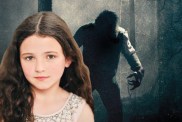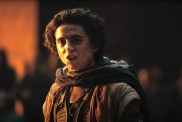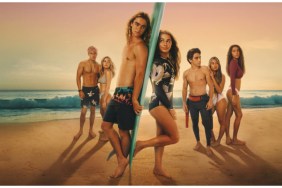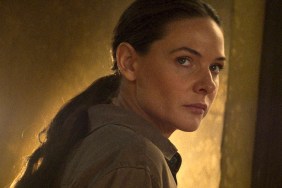Jeff reunites with the Freeling family

No one trick or treats on the last day of school, no one carves jack o’ lanterns on July 4th, or goes on haunted hayrides in August.
When it comes to beloved macabre traditions, the fall is the season that gets all the attention. Thanks to the celebration of Halloween, the autumn months have always been indelibly associated with all things frightful. Summer, on the other hand, is ostensibly all that horror isn’t about â a golden time of warm weather, trips to the beach, fireworks, road trips and family picnics.
For those movie buffs that prefer the inside of their neighborhood cinemas (or, for some, the nighttime chill of drive-in theaters) to the blistering heat, however, the summer is the real witching season. Some believe that horror vacations in summer, waiting for fall to arrive, but box office history tells a different story.
Starting in 1975 when Jaws invented the modern blockbuster by teaching a generation to be afraid of the ocean, summer has been the best time of year to be scared. The fall can keep Halloween. It can keep the costumes, the candy, the Great Pumpkin, all of it â because summer has always had the better movies.

Until 2012 arrives (due to be the year of The Avengers, Batman 3 and the Godzilla and Spider-Man reboots), the summer of 1982 will remain unchallenged as the greatest geek summer ever. It was so great that even the movies from that summer that sucked (I’m looking at you, Megaforce!) were awesome. Once I became older, several films that I was too young in ’82 to appreciate (or even be allowed to see) have become favorites but back in the day, there was no question in my mind that Poltergeist, the unlikely (and reportedly one-sided) collaboration of producer Steven Spielberg and director Tobe Hooper, ruled that summer.
On a June night in ’82 in which my mother and a group of other moms were taking their collective kids in one massive entourage out to the movies, the pick of the night was E.T. but I successfully lobbied to tag along with the oldest sons who were breaking from the pack to see Poltergeist. These two high school kids kindly didn’t balk at my company and before long I was having my first big time, big screen horror movie experience and it did not disappoint. When we met back up with our moms and the rest of the group afterwards, they couldn’t stop talking about how goddamned wonderful E.T. had been but I was confident that I had seen the better of the two movies. Let’s see, uh, kids flying on bikes (whee!) or a dude tearing his face off (holy shit!!). Yeah, E.T. was for little punks. Of course, Poltergeist was for punks like me who couldn’t get into John Carpenter’s The Thing, but give me a break â Poltergeist was still freakin’ cool! Over the course of the many years since then, my feelings towards Poltergeist have changed somewhat but I can never totally forget that in ’82, that movie almost single-handedly made my summer.

Prior to its release, Poltergeist was hyped as being to paranormal phenomenon what Spielberg’s Close Encounters of the Third Kind (1977) had been to the U.F.O. subculture. I contend that CE3K was more pseudo-scholarly (at best) than actually serious towards the subject of U.F.O.s, but compared to Poltergeist‘s treatment of the paranormal, it looks like the height of responsible academic research. The teaser posters may have promised that Poltergeist would be “the first real ghost story,” but while the film begins with the Freeling family experiencing phenomena in their suburban home similar to real-life reported cases of poltergeist activity, the screenplay by Spielberg, Michael Grais and Mark Victor is really about giving the resources of Industrial Light & Magic a work-out. Without the ILM eye-candy, it wouldn’t be the same Poltergeist that we know and love but yet watching the movie today, I find it jarring how the movie catapults from minor, if still inexplicable, events to the spectacle of a tree coming to life, physically attacking the house (and trying to devour a child!) all while a tornado touches down in the backyard.
In terms of the outrageousness of its incidents, Poltergeist is a haunted house movie with as many bells and whistles as it can afford. It makes The Amityville Horror, with all its ballyhoo, look like a restrained investigation of things that go bump in the night.
Ironically, the scares that work best today are the low-tech ones â besides the famous clown doll (an instantly iconic prop that doesn’t even have to move to be terrifying), there’s the moment where Diane Freeling passes by Robbie and Carol-Anne’s bedroom and tentatively tries to crack open the closed door only to have to pull it shut with two hands after an enormous roar erupts from the room (a terrific jump moment acheieved only through performance and sound effects); also, I love the nasty bite that paranormal investigator Marty receives after venturing alone upstairs (a simple, but painful-looking, make-up job that actor Martin Casella reveals on his left side as he lifts up his shirt).

Speaking of the much-abused Marty, no discussion of Poltergeist would be complete without a mention of the infamous face-ripping scene. It’s slightly embarrassing for me to remember how wholly convincing this looked to me in 1982 (my animated reaction in the theater that June night was testimony to that!) and how instantly phony it appears now. I still love it, though. To be fair, it was the early ’80s â having someone rip their own face off wasn’t as easy as it is today (although no offense to make-up artist Craig Reardon but I bet Tom Savini would’ve found a way to ace that effect)! When I think of the great gore effects that blew my mind as a kid, this scene (from a PG movie, no less!) is right up there with anything I saw at an impressionable age in any slasher film.
As much as Poltergeist‘s story (liberally pinched from the classic Richard Matheson-scripted Twilight Zone episode “Little Girl Lost”) becomes mired in paranormal jargon, spiritual babble and mystical nuttiness, the performances keep it grounded in real emotions and guarantee that you give a shit about what happens. Every part, from the leads on down to the smallest bit role (like Lou Perryman as Pugsley, the food-grubbing construction worker), was cast to perfection. As the Freelings, Craig T. Nelson, JoBeth Williams, Heather O’Rourke, Dominique Dunne, and Oliver Robins are 100% genuine. Compare them to the Lutz’s of The Amityville Horror, or to any other movie family for that matter â genre film or otherwise â and the difference is unmistakable. The Freelings rank as one of the most believable, endearing family units ever put on film.
Then there’s the group of paranormal investigators â Beatrice Straight as Dr. Lesh, Richard Lawson as Ryan, and the aforementioned Martin Casella as Marty â three very different individuals who seem to have nothing in common but a shared passion for the study of the supernatural. Before Ghostbusters was part of the popular culture, and even longer before reality TV had its own Ghost Hunters, I was fascinated by why these people had chosen their unconventional line of work. Bring in Zelda Rubinstein as Tangina Barrons, the most memorable movie psychic ever and you’ve got a party!

Unfortunately, Poltergeist parties a little too hard. With a climax that feels as though every idea that was ever floated for the finale was contractually obligated to be included, this is the original Movie That Doesn’t Know When To Stop. Corpses and coffins erupt from the ground, closets turn into throats with pulsating tendrils and a tongue, and the whole Freeling household crumples into nothingness. It’s that over-stuffed quality that made me love the movie as a kid but that also makes me look a little askance at it now.
A question movie fans have to contend with as they get older is whether they can still love the movies they did when they were kids once they’re old enough to perceive the faults of those films. I say, yes. As a haunted house, Poltergeist may seem more like a teetering house of cards to me today but I can’t forget that in the summer of ’82, it all worked for me and that the night I saw Poltergeist was as perfect a movie-going experience as I’ve ever had. So what if it only seems like a ghost of what it was?
Poltergeist wasn’t the best movie in the summer of ’82 but it didn’t have to be. For me, it was the best ride.
Click here for Ryan’s thoughts on Friday the 13th: Part 3!
The House Where Evil Dwells (May 7th)
Visiting Hours (May 28th)
The Thing (June 25th)
Friday the 13th Part 3 (August 13th)
Jekyll and Hyde…Together Again (August 27th)
The Amityville Horror (Jeff Allard)
Phantasm (Ryan Turek)










